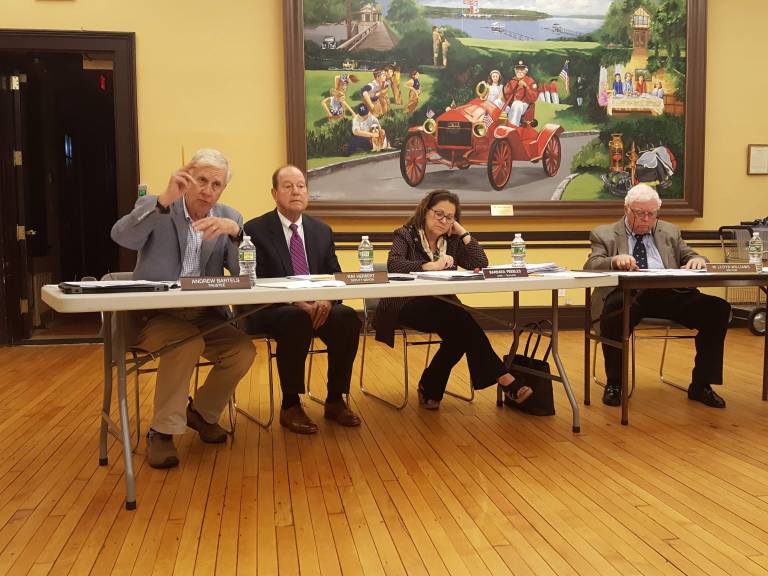
Much-debated changes in the Village of Plandome’s building and zoning codes that seek to standardize the size of new or redeveloped village homes were the topic at a public hearing Tuesday night.
In their third, and likely final, iteration, the revisions have two tiers for the maximum potential size of structures on property, one for average-sized lots and another for large ones.
The village’s Board of Trustees has been developing the code changes for months, and the process is now in its final stages, with the hearing being the penultimate step before a final vote planned for Nov. 13.
The changes were in response to complaints from residents regarding the construction of homes that they deemed too large for the size of the property. The new code intends to maintain a balance between a resident’s right to develop while maintaining some consistency in the look of the village.
“We’re trying to do it as gently as we can,” said Mayor M. Lloyd Williams.
The current code has a sliding scale for each district’s maximum allowance for gross floor area (GFA). The limit increases in proportion to the property size.
Under the new code, the districts have two tiers for the maximum GFA. Very few houses currently exceed what their new maximum would be.
About 10 residents brought varying opinions to the hearing. Among them were concerns that residents should be able to understand the changes’ effect on their individual homes, especially when some are classified as being in a different zoning district than other homes on their block, subjecting them to different sizing parameters.
Some wanted to make sure that if their home were to “burn to the ground” they would still be allowed to rebuild with an equivalent size of the original structure. The board clarified that in the case of catastrophe, buildings are “grandfathered” into the prior version of the code.
Attendees differed in opinions about whether the board had done enough or too little preparation leading up to the final decision. Some were worried that not enough people fully knew about it, but one man insisted it was time for it all to end.
“You guys did a darn good job informing this community,” he told the board. “It’s time to have a vote and an upward or downward on this and let it be.”
As a result of the hearing, the board said it would send a letter to Village of Plandome residents to update them on the proposed changes.
The other topic of discussion at the hearing involved ExteNet Systems Inc., which will soon be placing cell connection boxes on several existing telephone poles in the village.
The village has had moratoriums on new telecommunication installations and is developing a law that would instead regulate them.
The board is working with a consultant to determine which poles to place the five ExteNet boxes on and to ensure that they are “as unobtrusive as possible,” Trustee Andrew Bartels said.
“The actual impact on residents of this is pretty minimal,” he said.
At the board’s regular meeting, which immediately followed the hearing with just as much lively discussion with attendees, the board introduced a new local law that would collect an impact fee from contractors doing construction in the village. The fee would pay for road repair of areas damaged during construction.
The board also approved a request from the New York Public Interest Research Group (NYPIRG) to solicit in the neighborhood, an issue that village Attorney John Ritter said the board had little legal leeway to fight.
The only way for residents to prevent NYPIRG from knocking on their door is to post a sign on their property that says “no solicitation.”
During the board’s department reports, residents raised concerns about specific points in village roads that they said require special traffic attention, whether it be a dangerous place for pedestrian crossing or the need for a greater police presence to catch speeding cars.






